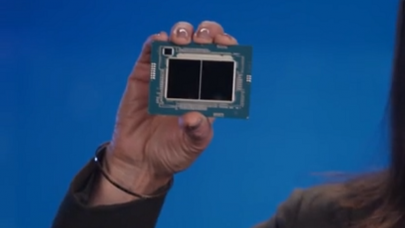
Intel Issues Roadmap Update, Aims for ‘Scheduled Predictability’
March 30, 2023
Intel held an investor webinar yesterday, with the chip giant working to project consistency and confidence amid slipping roadmaps and market share. At the even Read more…

Intel’s Server Chips Are ‘Lead Vehicles’ for Manufacturing Strategy
March 30, 2023
…But chipmaker still does not have an integrated product strategy, which puts the company behind AMD and Nvidia. Intel finally has a full complement of server and PC chips it will release in the coming years, which will determine whether it has regained its leadership in chip manufacturing. The chipmaker this week... Read more…

Intel Hopes to Stop Server Beating from AMD Next Year
March 13, 2023
After getting bruised in servers by AMD, Intel hopes to stop the bleeding in the server market with next year's chip offerings. The difference-making products will be Sierra Forest and Granite Rapids, which are due out in 2024, said Dave Zinsner, chief financial officer at Intel, last week at the Morgan Stanley Technology, Media and Telecom conference. Read more…

Intel Announces Falcon Shores CPU-GPU Combo Architecture for 2024
February 18, 2022
Intel held its 2022 investor meeting yesterday, covering everything from the imminent Sapphire Rapids CPUs to the hotly anticipated (and delayed) Ponte Vecchio GPUs. But somewhat buried in its summary of the meeting was a new namedrop: “Falcon Shores,” described as “a new architecture that will bring x86 and Xe GPU together into a single socket.” The reveal was... Read more…

- Click Here for More Headlines

Whitepaper
Transforming Industrial and Automotive Manufacturing
In this era, expansion in digital infrastructure capacity is inevitable. Parallel to this, climate change consciousness is also rising, making sustainability a mandatory part of the organization’s functioning. As computing workloads such as AI and HPC continue to surge, so does the energy consumption, posing environmental woes. IT departments within organizations have a crucial role in combating this challenge. They can significantly drive sustainable practices by influencing newer technologies and process adoption that aid in mitigating the effects of climate change.
While buying more sustainable IT solutions is an option, partnering with IT solutions providers, such and Lenovo and Intel, who are committed to sustainability and aiding customers in executing sustainability strategies is likely to be more impactful.
Learn how Lenovo and Intel, through their partnership, are strongly positioned to address this need with their innovations driving energy efficiency and environmental stewardship.
Download Now
Sponsored by Lenovo
Whitepaper
How Direct Liquid Cooling Improves Data Center Energy Efficiency
Data centers are experiencing increasing power consumption, space constraints and cooling demands due to the unprecedented computing power required by today’s chips and servers. HVAC cooling systems consume approximately 40% of a data center’s electricity. These systems traditionally use air conditioning, air handling and fans to cool the data center facility and IT equipment, ultimately resulting in high energy consumption and high carbon emissions. Data centers are moving to direct liquid cooled (DLC) systems to improve cooling efficiency thus lowering their PUE, operating expenses (OPEX) and carbon footprint.
This paper describes how CoolIT Systems (CoolIT) meets the need for improved energy efficiency in data centers and includes case studies that show how CoolIT’s DLC solutions improve energy efficiency, increase rack density, lower OPEX, and enable sustainability programs. CoolIT is the global market and innovation leader in scalable DLC solutions for the world’s most demanding computing environments. CoolIT’s end-to-end solutions meet the rising demand in cooling and the rising demand for energy efficiency.
Download Now
Sponsored by CoolIT
Advanced Scale Career Development & Workforce Enhancement Center
Featured Advanced Scale Jobs:
HPCwire Resource Library
HPCwire Product Showcase
© 2024 HPCwire. All Rights Reserved. A Tabor Communications Publication
HPCwire is a registered trademark of Tabor Communications, Inc. Use of this site is governed by our Terms of Use and Privacy Policy.
Reproduction in whole or in part in any form or medium without express written permission of Tabor Communications, Inc. is prohibited.
























